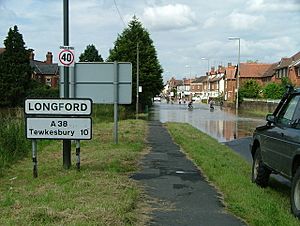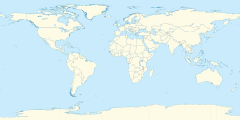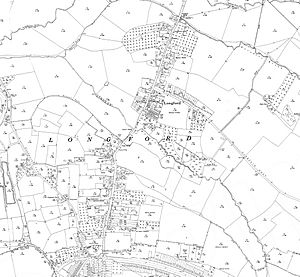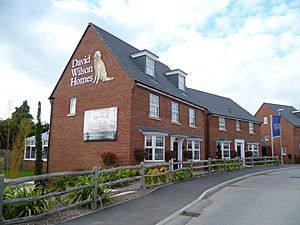Longford, Gloucestershire facts for kids
Quick facts for kids Longford |
|
|---|---|
 Longford flooding in 2007 |
|
| Population | 1,962 (2021 census) |
| OS grid reference | SO839205 |
| • London | 103m |
| Civil parish |
|
| District |
|
| Shire county |
|
| Ceremonial county |
|
| Region | |
| Country | England |
| Sovereign state | United Kingdom |
| Post town | GLOUCESTER |
| Postcode district | GL2 |
| Dialling code | 01452 |
| EU Parliament | South West England |
| UK Parliament |
|
Longford is a village in Gloucestershire, England. It is also a "civil parish," which is a local area with its own council that manages some local services.
Even though Longford is very close to Gloucester city centre (less than two miles away), it is actually part of the Borough of Tewkesbury.
The village is next to the Tewkesbury Road, which goes north out of Gloucester. The busy A40 road, which goes around the north of Gloucester, cuts through Longford at a big roundabout. There's also a special bicycle path that connects Longford to Gloucester.
Longford is mostly a place where people live. It has the Oxstalls Sports Park and Tennis Centre, the Winfield Hospital, and two football clubs: Longford AFC and Gala Wilton.
Contents
A Look at Longford's Past
Longford's name comes from its history. The road from Gloucester to Tewkesbury used to cross wet, low-lying land here. Bridges and a raised path, called a causeway, helped people get across. This "long ford" gave the village its name.
There was a small settlement here very early on, possibly with a medieval cross and a chapel. A place called Plock Court, east of the main road, stands where an old manor house once was.
By the late 1700s, Longford village had several farmhouses and large homes. The village grew a lot in the 19th and 20th centuries. Many new houses were built for people who worked in Gloucester. The Queen's Head inn, a local pub, opened by 1851.
In 1855, Longford officially became its own civil parish.
Hospitals and Homes in Longford's History
In 1866, a free hospital for poor children opened in Longford. It was next to St. Lucy's Home of Charity. This home was run by a group of Anglican sisters who trained nurses and cared for sick people.
Thomas Gambier Parry, who helped start the sisters' community, also had the idea for the children's hospital. He paid for much of the building. The hospital opened in 1867 with 22 beds. It helped children from all over, and out-patients could get treatment at another house nearby.
Later, in 1927, a large house called The Limes became a place for people to recover after being sick. During World War II, it was even used as a temporary maternity hospital. In the mid-1940s, it became a children's home.
Famous People from Longford
- Dorothy Wilding, a well-known photographer who took pictures of famous people, was born in Longford in 1893.
Learning in Longford
Longford has a new primary school and nursery called Longford Park Primary Academy. It opened in September 2017 near the Longford Village Hall. This school has 210 places for students.
The University of Gloucestershire has also made big improvements to its Oxstalls Campus at Plock Court. Between 2017 and 2022, they added a new business school and improved sports facilities. These include a sports hall and new pitches, which also help the local community.
Fun and Games in Longford
Longford has been a place for sports and entertainment.
From 2013 to 2017, Oxstalls Sport Park at Plock Court hosted the Sportbeat Music Festival. This was a two-day outdoor event with both music and sports.
Sports you can do in Longford include:
- Oxstalls Tennis Centre: This centre at Oxstalls Sports Park has 6 indoor and 4 outdoor tennis courts.
- Gala Wilton Football Club
- Longford A.F.C.
Longford has also been a filming location! From 1981 to 1983, a house called Fairmile House was used for filming two series of the BBC2 TV comedy show The Last Song (TV series), which starred Geoffrey Palmer (actor).
Dealing with Flooding
Longford was badly affected by the July 2007 floods. Many homes in the village were flooded. The bar at the Queen's Head pub on Tewkesbury Road was under about two feet of water.
Getting Around Longford
The A38 road goes right through the middle of Longford. Towards the south of the village, the A38 leads to a roundabout. From this roundabout, you can get onto the A40 or head towards Gloucester.




